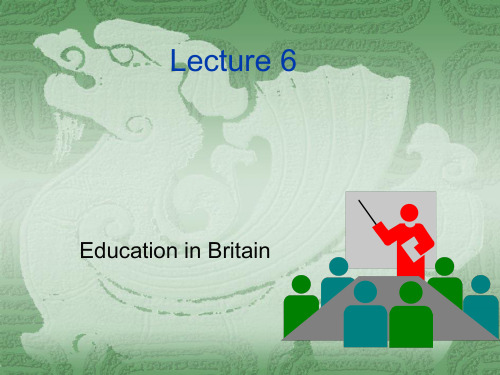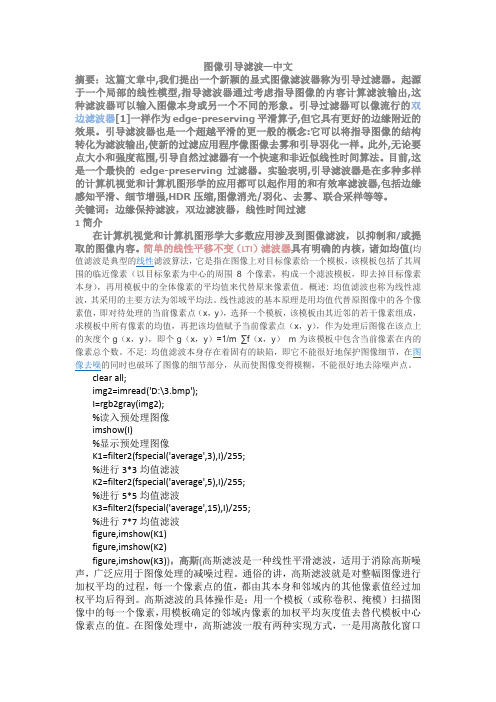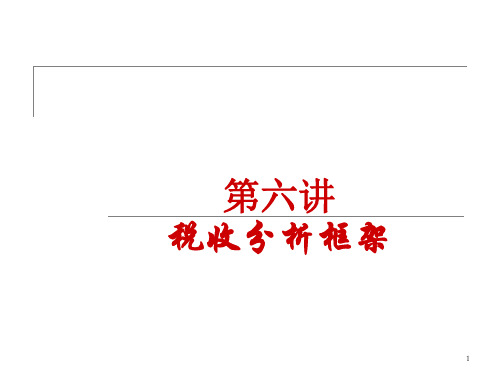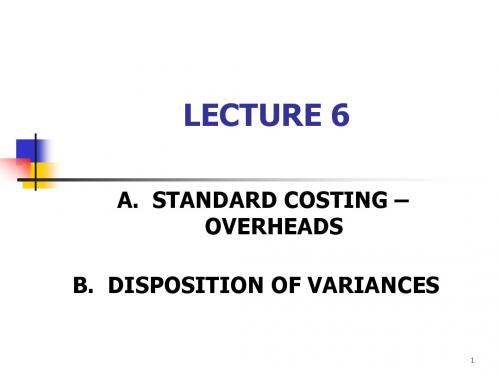Lecture6 - Applying Image Filters
- 格式:ppt
- 大小:12.63 MB
- 文档页数:59

关于照片滤镜的作文英语Exploring the Artistry of Photo Filters。
In the era of digital photography, where every smartphone comes equipped with a plethora of photo-editing apps, the use of filters has become ubiquitous. From enhancing colors to adding vintage effects, photo filters offer a myriad of options to transform an ordinary image into a stunning piece of art. In this essay, we will delve into the world of photo filters, exploring their history, evolution, and impact on contemporary photography.Photo filters, in essence, are digital overlays applied to images to modify their appearance. They can alter various aspects of a photo, such as brightness, contrast, saturation, and hue, to achieve desired visual effects. The concept of filters dates back to the early days of photography when photographers used physical materials like colored glass or gelatin to manipulate light and add creative touches to their prints.However, with the advent of digital photography and image editing software, the process of applying filters has become much more accessible and versatile. Today, anyone with a smartphone can effortlessly transform their photos with just a few taps on a screen. This accessibility has democratized the art of photography, allowing amateurs and professionals alike to express their creativity without the need for expensive equipment or specialized skills.One of the most popular types of filters is the "Instagram filter." These filters, named after the social media platform that popularized them, emulate the look and feel of vintage cameras, Polaroid film, and other analog photography techniques. They evoke a sense of nostalgia and authenticity, appealing to users' desire for aesthetics reminiscent of bygone eras.Beyond Instagram filters, there are countless other filter presets available in various photo-editing apps and software. From subtle adjustments to dramatic transformations, these presets cater to a wide range ofartistic preferences. Some filters aim to enhance the natural beauty of a scene, while others push the boundaries of creativity with surreal effects and abstract compositions.Moreover, many photographers create custom filters tailored to their unique style and vision. These signature filters become synonymous with their creator's brand, distinguishing their work in a crowded digital landscape. By developing their own filters, photographers can maintain consistency across their portfolio and convey a cohesive visual identity to their audience.The evolution of photo filters mirrors the broader trends in visual culture and digital aesthetics. As social media platforms continue to influence our perception of beauty and authenticity, filters play a significant role in shaping the images we consume and share online. They not only enhance the visual appeal of photos but also serve as tools for self-expression and storytelling.However, like any tool, photo filters can also bemisused or overused, leading to artificial-looking images that lack authenticity. The quest for perfection through digital manipulation can sometimes detract from the genuine moments captured in a photograph. Therefore, it isessential for photographers to exercise restraint and use filters judiciously, ensuring that they enhance rather than detract from the emotional impact of their images.In conclusion, photo filters have revolutionized the way we perceive and create images in the digital age. From their humble beginnings as physical overlays to their ubiquitous presence in smartphone photography, filters have become indispensable tools for photographers and visual artists. By understanding the history, evolution, and impact of photo filters, we gain a deeper appreciation for their role in shaping contemporary photography and visual culture. As we continue to explore new possibilities in image editing and manipulation, let us remember the importance of creativity, authenticity, and storytelling in the art of photography.。

Mathematica图像处理命令集1图像处理和分析Mathematica 为现代⼯业强度的图像处理的编程和互动提供了具有⼴度和深度的内置⽀持——完全与 Mathematica 强有⼒的数学和算法功能整合在⼀起. Mathematica 特有的符号结构和笔记本模式使得视觉形式上的图像可以直接互动和编程操作.构建和导⼊图像复制, 拖/放 — 直接复制和粘贴进笔记本⾥Import — 编程导⼊任意标准格式 (TIFF, PNG, JPEG, DICOM, ...) Image — 从数据数组中创建图像,表⽰任意多通道图像Rasterize — 将表达式、笔记本或任何 Mathematica 对象变换成光栅格式 CurrentImage — 从摄像机或其它设备实时获取图像或录像ImageCapture — 打开⼀个⽤以获取图像的图形⽤户界⾯RandomImage — 从符号式分布中创建⼀个图像图像的表⽰ ?ImageData — 从图像中摘录光栅数据的阵列ImageDimensions ? ImageChannels ? ImageType ? ImageHistogram ? ...Thumbnail — 以缩略图形式表现图像基本图像操作 ?ImageCrop ? ImagePad ? ImageTake ? BorderDimensions ? ...ImageResize ? ImageRotate ? ImageReflect ImageAdjust — 调节⽔平度、明度、对⽐度和伽马校正等 Sharpen ? Blur ? Lighter ? Darker ImageEffect — 特殊图像和照⽚效果 Inpaint — 润饰部分图像图像⼏何 ?ImageTransformation ? ImagePerspectiveTransformation ? ...颜⾊处理 ?Colorize ? ColorConvert ? ColorSeparate ? ColorQuantize ? ...滤波与邻域处理 ?ImageFilter ? ImageConvolve ? ImageCorrelate GaussianFilter ? LaplacianFilter ? DerivativeFilter MeanFilter ? MedianFilter BilateralFilter PeronaMalikFilter ...MinFilter ? MedianFilter ? GradientFilter ? EntropyFilter ? WienerFilter ? BilateralFilter ? ...形态学图像处理 ?Dilation ? Erosion ? Opening ? Closing ? Thinning ? Pruning ? ...DistanceTransform ? TopHatTransform ? HitMissTransform ...MorphologicalComponents MorphologicalPerimeter MorphologicalEulerNumber ...、管路敷设技术通过管线不仅可以解决吊顶层配置不规范⾼中资料试卷问题,⽽且可保障各类管路习题到位。


图像引导滤波—中文摘要:这篇文章中,我们提出一个新颖的显式图像滤波器称为引导过滤器。
起源于一个局部的线性模型,指导滤波器通过考虑指导图像的内容计算滤波输出,这种滤波器可以输入图像本身或另一个不同的形象。
引导过滤器可以像流行的双边滤波器[1]一样作为edge-preserving平滑算子,但它具有更好的边缘附近的效果。
引导滤波器也是一个超越平滑的更一般的概念:它可以将指导图像的结构转化为滤波输出,使新的过滤应用程序像图像去雾和引导羽化一样。
此外,无论要点大小和强度范围,引导自然过滤器有一个快速和非近似线性时间算法。
目前,这是一个最快的edge-preserving过滤器。
实验表明,引导滤波器是在多种多样的计算机视觉和计算机图形学的应用都可以起作用的和有效率滤波器,包括边缘感知平滑、细节增强,HDR压缩,图像消光/羽化、去雾、联合采样等等。
关键词:边缘保持滤波,双边滤波器,线性时间过滤1简介在计算机视觉和计算机图形学大多数应用涉及到图像滤波,以抑制和/或提取的图像内容。
简单的线性平移不变(LTI)滤波器具有明确的内核,诸如均值(均值滤波是典型的线性滤波算法,它是指在图像上对目标像素给一个模板,该模板包括了其周围的临近像素(以目标象素为中心的周围8个像素,构成一个滤波模板,即去掉目标像素本身),再用模板中的全体像素的平均值来代替原来像素值。
概述:均值滤波也称为线性滤波,其采用的主要方法为邻域平均法。
线性滤波的基本原理是用均值代替原图像中的各个像素值,即对待处理的当前像素点(x,y),选择一个模板,该模板由其近邻的若干像素组成,求模板中所有像素的均值,再把该均值赋予当前像素点(x,y),作为处理后图像在该点上的灰度个g(x,y),即个g(x,y)=1/m ∑f(x,y)m为该模板中包含当前像素在内的像素总个数。
不足:均值滤波本身存在着固有的缺陷,即它不能很好地保护图像细节,在图像去噪的同时也破坏了图像的细节部分,从而使图像变得模糊,不能很好地去除噪声点。


Lecture 6:Classification and marginalizationBayesian modeling1.Specify the generative model2.Specify the inference process: how the observer computes and reads out the posterior (on a single trial)3.Calculate behavior across many trials: distribution of the MAP estimateGenerative model•p (measurements | state of the world)•Describes the statistical structure of the world and/or task : how the measurements arise stochastically from the state-of-the-world variable.•Also called noise model or forward modelGenerative models seen so farsx sx Vx A Combining a measurement with a priorCue combinationC xordiscrete variable()()()()()()()1||11loglog 1||11p C x p x C p C d x p C x p x C p C ======−=−=−Log posterior ratio (or log odds ratio):()()()()|11loglog|11p x C p C p x C p C ===+=−=−log likelihood ratio (LLR)log prior ratioTuesday: binary decisions()0d x >MAP decision rule:dConfidence:Goals for today•See examples of other generative models in natural and psychophysical tasks•Understand how to derive the posterior for any generative model: marginalization •Work out a detailed example: visual search–Binary decision–Weighting by reliabilityExamples of other generative modelsClassificationTwo difficulties for an observer:•Noise: internal representation varies •Ambiguity: different causes, same soundAmbiguitya trapezoida rectangle on a roada weird wire frameCsxclassstimulusinternal representationGenerative modelAmbiguity p (s |C )Sensory noise p (x |s )Irrelevant variableKersten and Yuille, 2003The same object looks differently when viewed from a different angle.Generative modelIs θobject identity viewing angleimage Each node comes with a probabilitydistributionAB CBCAABCp(A)p(B|A)p (C|A)How does an observer do Bayesian inference for a given generative model?(Step 2)InferenceComputing the posterior distribution over the state-of-the-world variable based on the observationsAB CBCAABCGeneral approachpute the joint probability distribution by“following the arrows”.pute any conditional probabilitydistribution by marginalizing the jointdistribution. Conditional independence AB C()()()(),,||p A B C p A p B A p C A=()()()()()()()()(),,|| |,,||Ap A B C p A p B A p C A p A B Cp B C p A p B A p C A==∑DiscountingBCA()()()(),,|,p A B C p A p B p C A B =()()()()()()()()(),|,,||,BA Bp A p B p C A B p A C p A C p C p A p B p C A B ==∑∑Markov chainAB C()()()(),,||p A B C p A p B A p C B =()()()()()()()()()()(),,,,||,|,,||BBA BA Bp A B C p A p B A p C B p A C p A C p C p A B C p A p B A p C B ===∑∑∑∑In computing the posterior, a Bayesian observer marginalizes (sums or integrates) over every variable in the generative model other than the observations and the state-of-the-world variable of interest.More complex exampleBC DEF GAHomework: Compute p (A |E,F ) based on the conditional probabilities indicated in this generative model.Step 3: Response/estimate distribution()ˆargmax |ssp s x =MAP estimationEstimate distribution()ˆ|p ss ()()()()==>|ˆ1|Pr p x C p C C d x k Continuous:Binary:P r o b a b i l i t yˆs()ˆ|p ss False alarm rateD e t e c t i o n r a t e()0d x >Binary:Worked example: visual search(a bit more general than needed)Visual search Visual search in laboratoryWas the target present?Step 1: Generative model1. Choose trial type (target absent or present with equal probability)x x x x x x 3. At each location, set orientation based onwhether a target or a distractor is there: s T or s D2. If the target is present, choose its location (equal probabilities)4. Internal observations (Gaussian noise)XT s Ds target distractorGenerative modelTGlobal target presence:Yes/no T 1,…,T NLocal target presence:Yes/nos 1s 2s N…Stimuli…x Nx 2x 1InternalrepresentationsWrite down the probability distributionsassociated with each node()1212,0,0,0,,...,|0N N T T T p T T T T δδδ== ()112,0,1,011,,...,|1i N NN T T T i p T T T T Nδδδ===∑ ()()|0i i i D p s T s s δ==−()()|1i i i T p s T s s δ==−()()22221|2i i i x s i i ip x s eσπσ−−=()()010.5p T p T ====Step 2: InferenceCalculate the probability that the target is present (or absent) given the internal observations of the orientations:()121|,,...,N p T x x x =Do this using the generative model and the rules of probability calculusFollowing the arrowsTT 1,…,T Ns 1s 2s N ……x Nx 2x 1()()()()()()()()()1111111111,,...,,,...,,,...,,...,|,...,|,...,,...,|,...,,...,|||N N N N N N N N NN i i i i i p T T T s s x x p T p T T T p s s T T p x x s s p T p T T T p s T p x s ====∏Log posterior ratio()()111|,...,log0|,...,N N p T x x d p T x x ===()0d x >MAP decision rule:dConfidence:Evaluate the log posterior ratio()()()()()()()()()()()()111,...,11,...,1,0,1,0,...,11,01|,...,log0|,...,1,...,|1||log0,...,|0||1||logN N NNi i i i i T T i NNi i i i iT T i NNT T T i i i i iT T j i T p T x x d p T x x p T p T TT p s T p x s ds p T p T TT p s T p x s ds p s T p x s ds Nδδδδ=============∑∏∫∑∏∫∑∑∏∫ ()()()()()(),0,...,11||...|1|1log|0|NTiiiiiT T i Nj j j j j j jj j j jp s T p x s dsp s T p x s ds Np s T p x s ds δ======∑∏∫∫∑∫Final result•Bayesian integration rule for visual search•Log likelihood ratio of local target presence()()|1log|0i i i i i p x T d p x T ===11logNd i d eN==∑()()122i T D T D i x s s s s σ−+=−()()122i T D i T D i x s s d s s σ−+=−x x x x x x Local log likelihood ratio:weighting by reliability!Ts Ds targetdistractorDoes this look familiar?Yes! Discrimination (previous lecture)Step 3: Response/estimate distributionMAP estimationDistribution of MAP estimateProblem: cannot be calculated in closed form!What to do?()()()111,...,logx s s Ns s N i d x x eNσ−+−==>∑()()()()()()|11|01ˆ1|1Pr ,...,0ˆ1|0Pr ,...,0T N T Np T T d x x p T T d x x=====>===>x xMonte-Carlo simulation•Draw (e.g. in Matlab) many samples of x (trials) from generative model, both in T =0 and T =1 condition.•Compute LLR and MAP estimate on each trial.•Create “empirical distributions” of the LLR and of the MAP estimateExample LLR distribution-1001020Log likelihood ratio, dF r e q u e n c ytarget presenttarget absent N =6N =4N =8N =600.5100.51False alarm rateD e t e c t i o n r a t eROCLogic of visual search example1.Generative model2.Inference3.Estimate distribution usingMonte-Carlo simulationFalse alarm rateD e t e c t i o n r a t eLog likelihood ratio, d F r e q u e n c yTT ,…,T s s s ……x x x ()121|,,...,N p T x x x =1logd eN=∑()()x s s d s s σ−+=−s x V x A s A x A s Vx VCNumber of causesO n e c a u s eTwo causesCausal inferenceCompare visual searchs 1s 2x 2x 1CLs 1 , s 2x 2x 1CThe Bayesian modeling approach•Completely normative, no ad-hoc assumptions •A set recipe that always works •Very general, e.g. in visual search:–Multiple targets–Target more often in some locations than others –Distractors drawn from some distribution over orientation•Can be directly and rigorously compared with other models (Thursday)Caveats•Humans might not be using the priorsimposed by the experimenter (can to some extent be tested)•Observers must learn the structure of the generative model to perform Bayesian inference.•In real-life perception, generative models are unknown and very complex.Zhu et al., 2008。